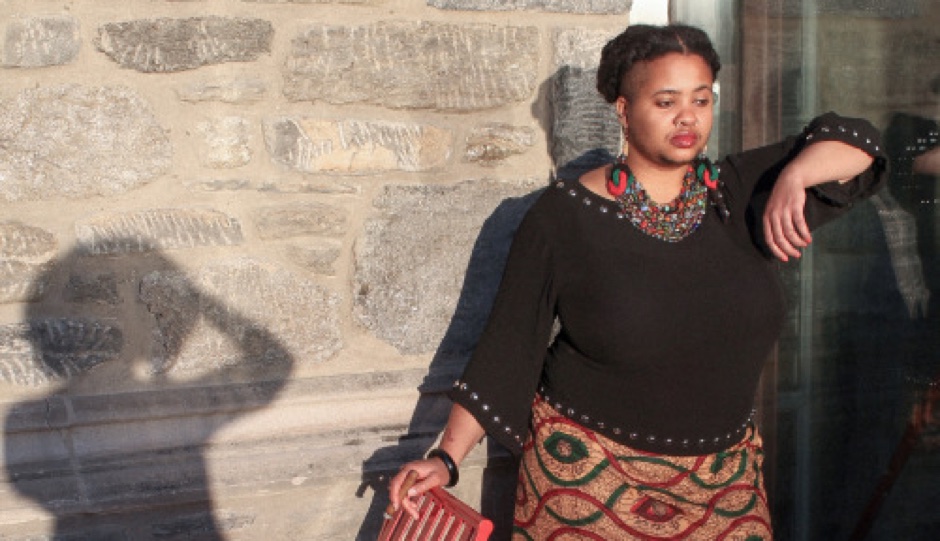LGBTQ&A: Wit López

Wit López | Photo by Yvonne Badu-Nimako
Wit López is a disabled, gender-nonconforming/non-binary transgender mixed-media creator, performer, and independent curator. We speak with the visual artist on using their aesthetics to challenge cultural stereotypes surrounding desirability, race, and gender expression.
Tell us a little bit about yourself.
I was born and raised in Brooklyn, but Philly is my home. I’ve been here for the 13 years of my entire adulthood and I wouldn’t trade it for anything. Currently, I’m working on a master’s degree and enjoying life as a full-time visual and performance artist.
You are an openly gender-nonconforming/non-binary transgender queer artist. What are the unique ways you have expressed your identity through art?
I like to express my gender identity and sexuality mostly through photo collaborations with other artists and through performance art. In a recent dance-based piece I performed at Haverford College, I used shoes as a representation of gender when dancing bomba, which is an Afro-Puerto Rican dance and music tradition. As a gender-nonconforming person, I chose to dance barefoot instead of wearing shoes considered traditionally “male” or “female.”
The photo collaborations with other artists give me the space to be my complete self without pandering to social norms of beauty. Through poses, clothing, and facial expressions, I can perform the fluidity of my gender identity in ways that are personally meaningful and transgressive to society’s expectations of a body like mine.
You often highlight being plus-sized, disabled, and being of African-American and Boricua descent. How do you navigate these experiences through life and your profession?
Being plus-sized, disabled, and African-American and Boricua are parts of who I am that go with me everywhere I go. I navigate society carefully, making sure to protect and fully express the vulnerabilities of these portions of my identity. For many of us who carry these identities, the world tries everything it can to let us know that we aren’t wanted. I try to combat this whenever I curate an art space. Fat, disabled, Black and/or Latinx bodies are welcome to exist unapologetically. And their artwork is welcome to exist without explanations and apologies too.
You’ve embraced elements of absurdity and the macabre throughout your work. How important are such themes in curating LGBTQ depictions through art?
For me personally, it’s important for me to embrace absurd and macabre elements in my work as an artist and as a curator. Embracing absurdity allows me to use levity in my work as a method of healing and resistance. It resists the notion that artists of marginalized identities should only create work that allows the public to consume our pain, which is often expected of us by larger art institutions. The absurdity is healing because it gives folks a place to have a genuine laugh about nonsense and to forget the things that are troubling them, even if it is only momentary.
On the other hand, the macabre is important to me too, though it speaks to violence and death. It is an unfortunate and sad truth that many of us have experienced at one point or another. I don’t often curate the macabre as much as I use it in my own art. As a chronically ill person who has come close to death on many occasions, threading death through my work helps me to have a healthy relationship with the inevitability of dying and the importance of planning final wishes.
What do you think it will take to help bring together various marginalized groups together within the LGBTQ community?
That’s a wonderful question, and I wish there were a simple answer for it. I’m not an authority on the issues of various marginalized groups, nor am I a spokesperson. I don’t know what specifically will bring us together, but I love the work that activists from marginalized groups are doing around Philadelphia to make sure that the needs of the community are met. The work is setting a much-needed precedent for activists and communities all throughout the United States. I couldn’t be more proud to be a queer and trans Philadelphian.


